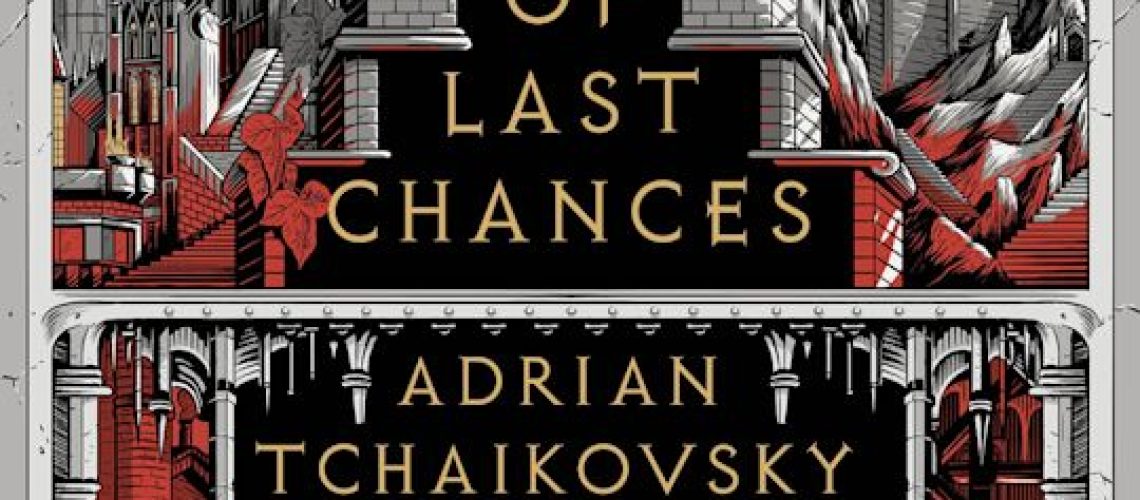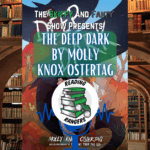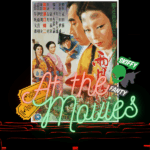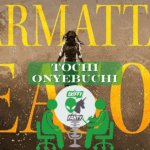“The first and perhaps only great mayor was Greek. He was Pericles of Athens, and he lived some 2500 years ago and he said all things good of this Earth flow into the city because of the city’s greatness. Well, we were great once. Can we not be great again?”
Those words from Al Pacino’s John Pappas are ones I have thought about ever since I have seen the movie “City Hall.” It’s been on my mind and has influenced my interest in City-State Fantasy¹. And while Sword and Sorcery, real small scale fantasy, seems to perpetually be on the edge of a renaissance but never quite gets there², City-State Fantasy seems to be having a boomlet. Daniel Abraham, fresh out of The Expanse, is constructing the tale of his own city, Kithamar. K J Parker’s recently completed Siege trilogy is the story of a city so archetypal that it doesn’t even really have a name, it’s The City. N.K Jemisin’s The City We Became does this with the City of New York. Marshall Ryan Maresca has built up a welter of books of his Archduchy of Maradaine. There is something in the water about Cities lately.
And so we come to Adrian Tchaikovsky’s The City of Last Chances. With the recent publication of the third book in this ‘verse, Days of Shattered Faith, I thought it would be good to take a look at how the series began.
While it is true that the story of a city is the story of the people in the city, or grounding a central person’s story in the city, Tchaikovsky’s approach from the get-go is to challenge that narrative structure. The early chapters of The City of Last Chances are a relay race of characters. We are introduced to them, get to know them, and then there is a tag to the next character, a mosaic approach to building up the city, the world, and the dramatis personae. But our expectations are challenged even here, as the second chapter, The Final Moments of Sage-Archivist Ochelby, is one of the two inciting incidents that together propel the main plot. The other incident that together propels us into the plot is in the next chapter and is a seemingly innocent gambling game, Chaq. Piece by piece, in these chapters, Tchaikovsky builds us up a picture of the city.
And what a city. Ilmar has seen much better days. Once upon a time it was a proud and independent city state. It had a corrupt government, uncertain institutions, was prone to violence from organized crime, from oppressed workers very willing to strike, and, oh yes, the very strange power that lies in the Anchorwood, a forest that apparently connects to other worlds. But all of that has changed in recent years, thanks to the city-state being conquered, and now being assimilated by the Pals (Palleseen).
But the two incidents together, like two chemicals each potent, but together extremely dangerous, together are enough to spark revolt and revolution. And this is the story that Tchaikovsky really wants to tell.
In telling the story of revolt and revolution, and having set us up with the mosaic opening of a series of characters at all levels and portions of Ilmar society, we get a kaleidoscope-like view of Ilmar. And what a view. From Yasnic, last priest (and last devotee) of God, a small God of healing with very specific requirements for his worshippers and even more for his priest, to Ivarn, teacher at the Gownhall (University) chafing under Palleseen restrictions on what can be taught, to points of view in the conquerors themselves, we build up all sorts of angles as the two fateful events wind up sparking defiance, and finally revolt, from various quarters and factions.
As a result, Tchaikovsky has a lot to say about Imperialism, oppression, control and freedom. He draws on a number of traditions and ideas in exploring these themes as the powder keg that is Ilmar finally erupts. Ilmar is a city whose magical technology and other cues (the existence of organized labor) give it a feel of the mid 19th century. Tchaikovsky is very deliberate in his choices, as are the editors and creators of the book. The map of Ilmar itself, a gorgeous piece of work, supports and reinforces the evocation of time and place (as does the cover). The sequence of events as the revolt/revolution proceeds, the centers of power and the Pals reaction to it point for me toward one result.
The City of Last Chances, to my view, is a secondary world fantasy story that recapitulates and echoes the revolutions of 1848, and perhaps to an even greater degree, especially given that we have an obsessive Palleseen as a viewpoint character, the Paris June Uprising of 1832. The details of the revolution of 1848 may be hazy for many readers, a time and place and sequence of events woefully underappreciated and not in the consciousness of the general public³. The June Uprising of 1832, however, all for it being smaller in scope, is likely a little better known to the general public for the image of Parisians defending barricades against oppression to a musical soundtrack. Yes, indeed, I am referring to Les Miserables.
If you are familiar with the story of Les Miserables, of course, you can see where this revolt, this revolution, this fight against the Palleseen is doomed to fail, but as the song goes, “there’s beauty in the struggle”. Even though one knows the end, that the city is probably not going to be able to throw off the Palleseen completely, the story of how it plays out and how this struggle affects the characters on all sides of the conflict, is the heart of the novel, just as the struggle and how it affects the characters is what makes the power of Les Miserables so timeless and potent.
But even as we see it affect these individual characters that make up the tapestry of this city state under oppression from all sides, Tchaikovsky plays a careful juggling act to show us the story of the city-state and the individual inhabitants’ stories. With careful changes in point of view in key moments (like, for example, switching sides in a barricade scene) the author shows the breadth of his ambition in trying to tell a tale of a city, a culture, a set of individuals and characters, caught up in the sweep of events (some of which is luck, some chance, some bad judgment and some their own doing).
And maybe nothing will change and maybe some small things can change as a result if a revolt can succeed. But whether or not that is worth the cost makes me wonder, too, if the Sepoy Mutiny of 1857-58 isn’t another taproot that Tchaikovsky is using here⁴.
Having these taproots and building blocks of revolution, revolt, conflict are one thing, and telling a cracking story of a city that overflows into result is another thing, and having a diverse and interesting set of characters is a Gripping hand on the third hand, but what does he do with all of these?
Themes and grand ideas are contained within the story of these characters, with an amazingly packed amount of invention in its pages. The novel bursts with its ideas, concepts and worldbuilding. Let’s talk about language. The Palleseen have, in an evocation of Western Imperialism and colonialism, imposed their own perfect language, making it the only official language of the city. The cultural imperialism of that alone might be enough, but Tchaikovsky goes a little deeper, goes that extra mile, in exploring what imposing a language and a mode of thought on people means, and what it means not only culturally, but mentally and psychologically, to have this done⁵.
Tchaikovsky similarly tackles academic freedom and education, economics of labor, capital (and demons!), crime and punishment, ideas of emigration, immigration, and of course the politics of oppression of conquest and imperialism. It’s not just the gross exploration of the idea that imperialism is terrible, but what it does to the oppressor and to the oppressed. We really get in deep with the characters and how these themes affect them in their daily lives, and the costs that entail. And, in a nuanced fashion, we see the costs of not picking up the hammer, of just getting along, of just hoping for the future rather than facing the problems that are very real and very now. That last bit should not be given short shrift. It’s important. The idea of “if not now, when?” is echoed by a couple of characters as the revolt lurches toward action, and there are multiple responses, answers, and consequences of those responses.
Tchaikovsky hadn’t published a full length fantasy novel in a while when he wrote City of Last Chances, preferring to stay in the SF side of the false binary. His return to such work in the Tyrant Philosophers series is triumphant and grand. City of Last Chances won the BSFA award for best novel in 2022, and, if this review has done its job, it is not hard to see why.
If you want to read more about Ilmar, Uncanny Magazine has a short and free story by Tchaikovsky set in the verse, “Woodmask”, here: https://www.uncannymagazine.com/article/woodmask/
¹a Subject I have no little appreciation for and have written about before in numerous reviews and articles.
²My thoughts on how and why that is is probably an essay in and of itself.
³I recommend Mike Duncan’s Revolutions! Podcast where I learned very much indeed about that revolution, and others (the details of the Haitian revolution, for example were very much new to me)
⁴ Tchaikovsky seems to be on a kick about Revolutions, revolts, struggle and in roughly this sort of feel of time period of technology, culture and society. C.f. his 2022 novella OGRES.
⁵ It doesn’t go to the lengths of, say, Jack Vance’s Languages of Pao, but there are definite echoes of Linguistic Relativity and exploring some of the ideas of the Sapir-Whorf Hypothesis.







